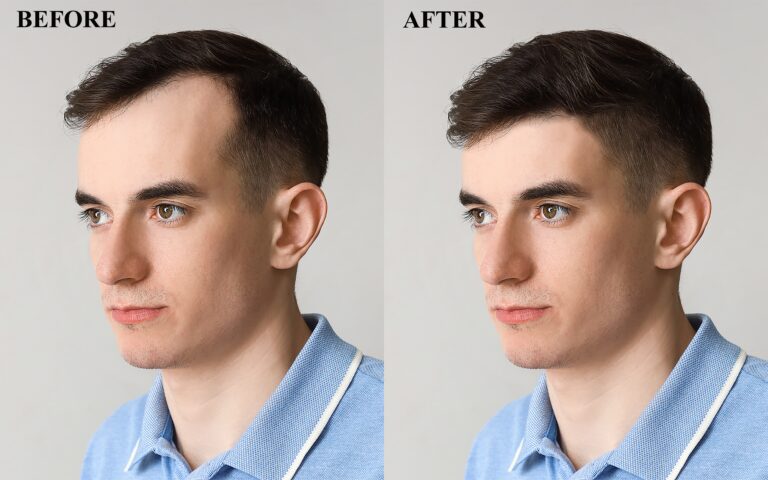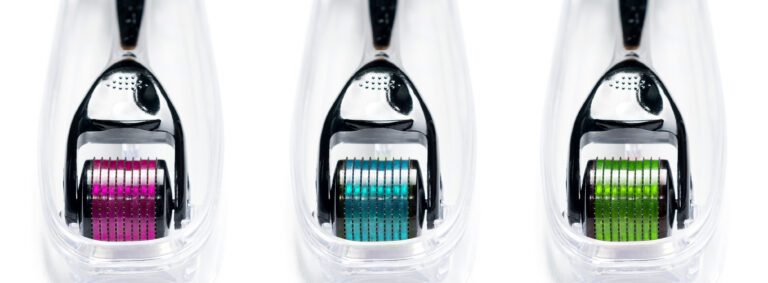What Are NeoGraft Hair Transplants? Are They More Effective?
As men and women age, hair loss becomes a more prevalent issue. It heavily affects people’s appearance, self-esteem, and overall well-being. Certain medical conditions and scalp injuries can also cause premature balding or a receding hairline.
Follicular Unit Transplantation (FUT) and Follicular Unit Extraction (FUE) are the two main methods of hair transplantation used by surgeons to restore hair thickness. A NeoGraft hair transplant falls under the FUE method and is a popular choice among hair loss sufferers.
If you’re on the lookout for a solution to your hair fall worries, you’ve come to the right place. In this guide, we’ll discuss the procedure, effectiveness, benefits, and cost of NeoGraft hair transplants.
What Is NeoGraft Hair Transplant?
NeoGraft is a semi-automated system of hair transplantation that’s utilized in Follicular Unit Extraction (FUE). FUE is a type of hair transplant that involves taking and preparing individual hair follicles from your head and moving them to a balding area of your scalp.
Among all the hair transplantation techniques in the market, NeoGraft is one of the latest and uses the most advanced technology. It’s proven to be a safe, effective, fast, and relatively painless procedure that provides natural-looking results.
NeoGraft hair restoration is suitable for people suffering from male or female pattern baldness and excessive hair shedding. Ideal candidates for this procedure are healthy and non-smoking individuals with sufficient hair density on the back and sides of the head.
Advantages of NeoGraft Hair Transplant
Here’s a list of benefits that only a NeoGraft hair transplant can provide:
- Less hair follicle trauma and damage than traditional FUE transplants
- High hair graft survival rates
- Doesn’t involve skin stripping, stitching, or stapling
- Faster than traditional FUE transplants
- Minimal chance of surgical complications and high safety
Disadvantages of NeoGraft Hair Transplant
On the other hand, the process of NeoGrafting hair also comes with its own set of drawbacks:
- Risk of infection after the procedure
- Potential complications, such as cyst formation, ingrown hair, or inflammation
- Presence of minimal scarring
- Feelings of numbness or tenderness
- Shock hair loss after the surgery
NeoGraft Hair Transplant Procedure
A typical NeoGraft hair transplant will take four to six hours, depending on the number of transplanted hair grafts. Since this is an outpatient procedure, expect to be in and out of your doctor’s office within the same day.
You can opt to stay awake or take sedatives to fall asleep during the hair transplantation process. Watching light forms of entertainment, snacking, and talking to technicians are available options as well.
Generally, your NeoGraft hair transplant will involve the following steps:
1. Before the transplant, your surgeon will apply a small amount of local anesthetic to ensure a pain-free process. The first part of the procedure also involves shaving the affected portions of your head.
2. Then, your surgeon will use a NeoGraft machine with gentle pneumatic pressure to extract individual hair follicles from your scalp.
3. Next, your surgeon will use the machine to make strategic incisions and precisely implant your hair grafts in the treatment area. Rest assured that your surgeon will have full control of the machine throughout the entire transplant.
4. After the procedure, your surgeon will bandage your head and possibly prescribe some pain medications to help you manage any discomfort.
Is NeoGraft Hair Transplant More Effective?
When performed by a highly-qualified technician using the right equipment, a NeoGraft hair transplant can yield a hair follicle survival rate of 95% and above! Consistent and reliable treatment results make this procedure even more effective than traditional surgeries.
In fact, most NeoGraft hair transplant reviews indicate a safe, comfortable, and successful experience. Patients were also glad that they could resume their normal day-to-day activities within a span of a few days.
NeoGraft received a 97% “worth it” rating on RealSelf reviews and a 92.6% patient satisfaction rating on RealPatientRatings.
NeoGraft Hair Transplant Results
After the procedure, you may experience minor swelling and redness in the affected areas of your head. As your scalp begins to heal, you’ll notice the formation of scabs. Strictly follow your doctor’s instructions regarding the cleansing and aftercare of your hair and scalp.
You can also expect hair fall around two weeks to two months after the hair transplant. No worries! This is a normal and anticipated part of the procedure. However, if you notice any other unusual symptoms, it’s best to immediately inform your doctor.
After about four to six months, your new hair will start to grow from the transplanted hair grafts. You’re free to cut and style the resulting hair as you wish. Overall, it usually takes 6–12 months for the final result of your transplant to become fully visible.
NeoGraft vs ARTAS Hair Transplant
Both the NeoGraft hair transplant system and the fully robotic ARTAS system use the Follicular Unit Extraction (FUE) method of hair transplantation. FUE is minimally invasive, results in less scarring, and has a shorter recovery time than other methods.
However, the difference between the two treatments lies in the performance of the transplant. NeoGraft is a semi-automatic and hand-held device that requires the expertise and manipulation of a skilled surgeon. Meanwhile, ARTAS performs the transplant of hair follicles all by itself.
ARTAS is significantly faster than NeoGraft, as it can perform as many as 1,000 skin grafts per hour. There’s also increased accuracy and less human error, as ARTAS creates a digital scalp map and strictly follows your doctor’s design when harvesting and transplanting grafts.
Additionally, ARTAS utilizes blunt dissection to cut the scalp and extract follicular units with minimal injury. Meanwhile, NeoGraft uses a rotating sharp punch method to dissect and suction out the individual hair grafts.
NeoGraft vs FUE Hair Transplant
A traditional FUE hair transplant involves the manual removal and implantation of hair follicles by a surgeon’s hand. Alternatively, NeoGraft surgery automates the harvesting, positioning, and implantation aspects of FUE to provide safer, faster, and more uniform results.
What’s more, NeoGraft FUE hair restoration eliminates the need for manual graft counting and paperwork, which can be a tedious and time-consuming process for both the surgeon and the patients.
The NeoGraft machine provides a standardized amount of suction and pressure during extraction and provides smooth entry during implantation, leading to more effective results!
Additionally, using a NeoGraft machine reduces the risk of human error by controlling the depth of the incisions. The machine also has a vacuum seal to protect grafts and ensure that they’re high quality.
Cost of NeoGraft Hair Transplant
NeoGraft women and men require different amounts of transplanted hair grafts, which greatly affects the associated costs of this procedure. The average price of each hair graft is $5 to $9. Multiply this amount by the number of grafts you’ll need to get an estimate of your total cost.
All in all, the average cost of a NeoGraft hair transplant is around $5,000 to $15,000.
Your chosen treatment facility, the extent of your hair loss, and the experience and expertise of your surgeon also contribute to the amount you’ll need to prepare for the surgery. Don’t forget to factor in the cost of medications, aftercare products, and related travel expenses.
It’s worth mentioning that a NeoGraft hair transplant is considered a cosmetic surgery, which makes it less likely to be covered by your insurance plan.
Wrapping Up
NeoGraft hair transplants are one of the safest, fastest, and most in-demand hair restoration surgeries available today. The use of semi-automated technology in performing the FUE method makes this procedure less invasive and more effective, with precise and uniform results.
As with all major operations, a NeoGraft surgery entails several risks, side effects, and potential complications. Patients may suffer numbness after the procedure and are vulnerable to infection during the recovery period.
If you’re considering this treatment option for your scalp, it’s best to carefully consider all the risks of this procedure and weigh them with the potential benefits. Additionally, don’t forget to consult a qualified and experienced surgeon to ensure maximum safety and optimal results.







